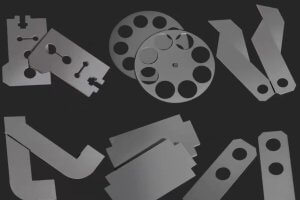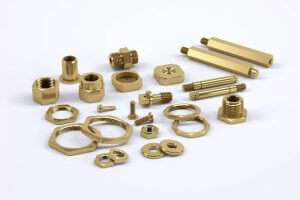Introduction to Non-Ferrous Metals
Non-ferrous metals are a broad category of metallic elements and alloys that do not contain iron in appreciable amounts. The absence of iron signifies that they are typically more resistant to corrosion and rust, which makes them ideally suited for applications where longevity and minimal maintenance are desirable. These metals are invaluable across various industries due to their distinct properties such as low weight (like aluminum), high conductivity (like copper), resistance to corrosion (like zinc), and non-magnetic nature (like lead). For instance, aluminum is widely used in aerospace and transportation for its strength-to-weight ratio, while copper serves as an excellent conductor of electricity, making it ubiquitous in electrical wiring and electronic products.
Characteristics of Non-Ferrous Metals
Non-ferrous metals are highly sought after for their distinct properties, which make them suitable for various industrial applications. One key attribute is corrosion resistance, a quality that ensures longevity and durability in harsh environmental conditions; for instance, copper exhibits excellent resistance to rusting when compared to iron. Additionally, non-ferrous metals often exhibit remarkable malleability and ductility, allowing them to be drawn into thin wires or hammered into thin sheets without breaking. A widely recognized characteristic of these metals is conductivity; copper, again, stands out as an exceptional conductor of electricity and heat, making it indispensable in electrical wiring and electronics. Furthermore, the weight advantage they hold over ferrous metals is significant – aluminum is known for its lightweight yet strong profile, beneficial in automotive and aerospace industries. Lastly, the non-magnetic properties of materials such as brass and lead mean they won’t interfere with magnetic fields, which is crucial in electronic shielding and specialty construction projects.
Types of Non-Ferrous Metals and Their Uses
Aluminum is a lightweight metal with high malleability, making it ideal for aerospace applications and beverage cans. Copper’s excellent electrical conductivity is why it is the material of choice in wiring and motors. Lead, with its high density and resistance to corrosion, serves primarily in lead-acid batteries as an electrode. Zinc plays a pivotal role in protecting steel from corrosion through galvanization – a process where zinc coatings prevent rust formation. Precious metals like gold, silver, and platinum are prized for their rarity and conductive properties, finding specialized uses in electronics, catalysis, and jewelry due to their resistance to oxidation and chemical reactions.
Production and Processing of Non-Ferrous Metals
The intricacies of production and processing in the non-ferrous metal industry start with mining and extraction techniques tailored for each type of metal, whether it be copper, aluminum, or zinc. Modern methods like open-pit mining and underground mining focus on minimizing environmental impact while maximizing efficiency. Following extraction, the refining processes begin to purify ores through techniques such as electrolysis for metals like aluminum, or hydrometallurgy for others like nickel. Finally, shaping and forming methods are employed to convert these raw materials into usable forms. Processes such as extrusion, which forces material through a die to create long objects with a fixed cross-sectional profile, or forging, where compressive forces shape metal, are examples that demonstrate the high level of control over physical properties achieved during this stage of production.
Recycling and Sustainability of Non-Ferrous Metals
Recycling non-ferrous metals offers significant environmental benefits, such as reducing the mining of virgin ores, lowering energy consumption, and cutting down greenhouse gas emissions. Sustainable practices within this industry focus on minimizing waste and maximizing resource efficiency. For instance, recycling aluminum saves up to 95% of the energy needed to produce it from raw materials. Moreover, recycled metals can be reprocessed indefinitely without losing their properties, which contributes to a circular economy. The positive impact of these actions is evident in reduced landfills, conservation of natural resources, and mitigated ecological damage, illustrating the critical role recycling plays in achieving sustainable development goals.
Industry Applications of Non-Ferrous Metals
In the construction industry, non-ferrous metals such as aluminum and copper are highly valued for their lightweight properties and resistance to corrosion which make them ideal for window frames, roofing, and electrical wiring. Within the automotive sector, these materials serve critical functions; aluminum’s light weight contributes significantly to fuel efficiency, whereas copper is essential in electrical systems and heat exchangers. The electronics field heavily relies on non-ferrous metals like gold for its excellent conductivity and anti-corrosive attributes, ensuring reliable performance in connectors and circuit boards. Moreover, packaging materials often include aluminum due to its malleability and complete recyclability, adding a sustainable edge to consumer products.
Market Overview for Non-Ferrous Metals: Supply and Demand Dynamics
The market dynamics of non-ferrous metals are greatly influenced by the balance between supply and demand, which in turn affects price stability. Factors such as mining output, recycling rates, geopolitical events, and technological advancements all contribute to the availability of these materials. On the demand side, industrial growth, particularly in construction, electronics, and automotive sectors, drives consumption rates. Disruptions in either supply or demand can lead to significant swings in non-ferrous metal prices. For instance, an increase in electric vehicle production could intensify demand for copper used in batteries, potentially outstripping supply and elevating prices.
Price Fluctuations and Factors Influencing Cost
Fluctuating prices in non-ferrous metals such as aluminum, copper, and zinc can significantly impact numerous industries. Various factors, including changes in currency exchange rates, trade policies, and energy costs, play a crucial role in shaping cost structures. Energy prices are especially pivotal since non-ferrous metal extraction and processing are energy-intensive processes. Additionally, speculative trading on commodity markets often leads to short-term price volatility independent of actual physical supply and demand conditions. By responding agilely to these market signals, buyers and suppliers can manage risks associated with unpredictable pricing trends.
Future Trends and Innovations in Non-Ferrous Metal Processing
As we venture into the future, non-ferrous metal industries are anticipated to witness groundbreaking technological advancements aimed at enhancing processing efficiencies. State-of-the-art techniques like machine learning algorithms will optimize manufacturing processes, reducing waste while forecasting maintenance needs for critical machinery, thus preventing downtime. In terms of emerging applications, novel uses in aerospace for lightweight yet strong composites are on the horizon, enabling more efficient aircraft designs that reduce fuel consumption and carbon emissions. Similarly, in electronics, conductive non-ferrous metals such as copper and silver could see transformative developments with nanotechnology, leading to smaller, faster, and more energy-efficient components. These ongoing evolutions reflect a sustained commitment towards innovation, sustainability, and meeting the demands of an ever-changing technological landscape.
Other Articles You Might Enjoy
- Non-Ferrous Metal Rivets: Choosing the Right CNC Machining Techniques and Materials
Selecting the Appropriate Non-Ferrous Metal: Aluminum, Copper, or Titanium? The selection of the appropriate non-ferrous metal for rivet production is a critical decision that impacts the manufacturing process and the…
- The Pros and Cons of Using Copper Alloys in CNC Machining Projects
Introduction to Copper Alloys and CNC Machining In the realm of materials suitable for manufacturing operations, copper alloys have emerged as a viable contender. Noted for their excellent thermal conductivity,…
- Exploring the World of Non-Ferrous Metals: Characteristics, Applications, and Innovations
Introduction to Non-Ferrous Metals Non-ferrous metals, distinguished by their lack of iron content, are highly valued for their versatility and distinct properties such as resistance to corrosion, high conductivity, and…






